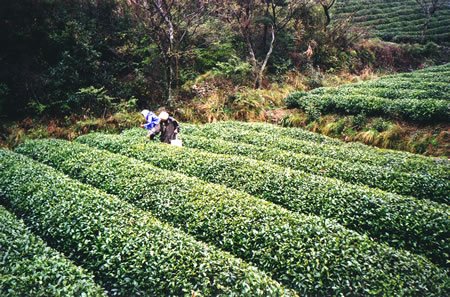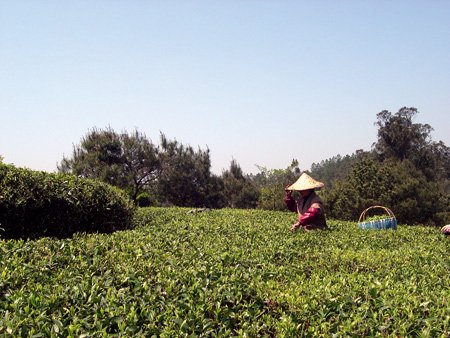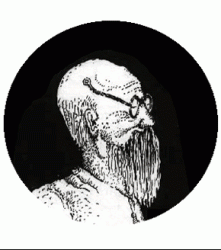zum Warenkorb € 0,00
0Die Urheimat des Tees
 Die Urheimat des Tees ist zweifellos China. Eine alte Legende erzählt, dass im Jahre 2737 v. Chr. der Kaiser Shen Nung die Heilkraft des Tees erfuhr, weil er seinen Kochtopf unter einem Teebaum stehen hatte, in den ein Teeblatt hinein gefallen sein soll. Die angenehme und anregende Wirkung dieses Getränks muss so aussergewöhnlich gewesen sein, dass diese Geschichte in fast allen Informationen über Grüntee zu finden ist. Sie beweist aber doch, dass der Grüntee eine lange Tradition hat. Grüner Tee ist etwas besonders, und es ist nicht einfach über die Vielfalt und den Sortenreichtum in kurzen Worten zu berichten. Allein in China gibt es hunderte von verschiedenen Qualitäten und Arten von Grüntee. Ob es die kräftigen Hunnan und Sichuantees sind, die vor allem im Frühjahr geerntet werden, oder die feinen Sorten aus Zhejiang wie Lung Ching und aus Guangxi der wunderschöne White Downy oder gar die lieblichen, weissen Tees aus Fujian. Es gibt nur eine sichere Methode, zu unterscheiden. Das ist, den Tee zu trinken, um seine spezielle Art kennen zu lernen. Probieren geht über studieren… Von Anhui im Norden bis in den Süden China Fujian und Guangdong. So vielfältig wie die Völker in diesem Land sind seine Tees. Der Grüntee ging seinen Weg von China nach Japan vor allem über den Buddhismus, der den Grünen Tee schon im 6. Jahrhundert für Meditiationszwecke verwendete.
Die Urheimat des Tees ist zweifellos China. Eine alte Legende erzählt, dass im Jahre 2737 v. Chr. der Kaiser Shen Nung die Heilkraft des Tees erfuhr, weil er seinen Kochtopf unter einem Teebaum stehen hatte, in den ein Teeblatt hinein gefallen sein soll. Die angenehme und anregende Wirkung dieses Getränks muss so aussergewöhnlich gewesen sein, dass diese Geschichte in fast allen Informationen über Grüntee zu finden ist. Sie beweist aber doch, dass der Grüntee eine lange Tradition hat. Grüner Tee ist etwas besonders, und es ist nicht einfach über die Vielfalt und den Sortenreichtum in kurzen Worten zu berichten. Allein in China gibt es hunderte von verschiedenen Qualitäten und Arten von Grüntee. Ob es die kräftigen Hunnan und Sichuantees sind, die vor allem im Frühjahr geerntet werden, oder die feinen Sorten aus Zhejiang wie Lung Ching und aus Guangxi der wunderschöne White Downy oder gar die lieblichen, weissen Tees aus Fujian. Es gibt nur eine sichere Methode, zu unterscheiden. Das ist, den Tee zu trinken, um seine spezielle Art kennen zu lernen. Probieren geht über studieren… Von Anhui im Norden bis in den Süden China Fujian und Guangdong. So vielfältig wie die Völker in diesem Land sind seine Tees. Der Grüntee ging seinen Weg von China nach Japan vor allem über den Buddhismus, der den Grünen Tee schon im 6. Jahrhundert für Meditiationszwecke verwendete.
English Version:
China, homeland of tea
 There is no doubt that tea originates from China. Ancient myth has it that in 2737 B.C., Emperor Shen Nung discovered the healing powers of tea when he left his kettle under a tea tree allowing a leaf to fall into the water. The pleasurable and stimulating impact must have been extraordinary – how else could it be that this story is found in almost every account of green tea. Evidently this tea has a long history. It is unique in many ways and not easy to introduce in its multiplicity and diversity. In China alone there are hundreds of different varieties and qualities, ranging from the strong flavoured Hunnan and Sichuan teas which are harvested during the spring months to the subtle blends such as Lung Ching from Zhejiang, the White Downy from Guanxi or the smooth white teas from Fujian. There is only one definite way to determine one from the other, and that is to actually drink the tea and get to know its unique character. Again, the proof of the pudding is in the eating. From the northern Anhui down to Fujian and Guangdong in the south of China – teas are just as diverse as the cultures of this country. Green tea made its way from China to Japan mainly due to Buddhism, which has been known to use green teas for meditation purposes as early as the 6th century. Today we know that green tea influences our central nervous system and has a stimulating effect on our consciousness.
There is no doubt that tea originates from China. Ancient myth has it that in 2737 B.C., Emperor Shen Nung discovered the healing powers of tea when he left his kettle under a tea tree allowing a leaf to fall into the water. The pleasurable and stimulating impact must have been extraordinary – how else could it be that this story is found in almost every account of green tea. Evidently this tea has a long history. It is unique in many ways and not easy to introduce in its multiplicity and diversity. In China alone there are hundreds of different varieties and qualities, ranging from the strong flavoured Hunnan and Sichuan teas which are harvested during the spring months to the subtle blends such as Lung Ching from Zhejiang, the White Downy from Guanxi or the smooth white teas from Fujian. There is only one definite way to determine one from the other, and that is to actually drink the tea and get to know its unique character. Again, the proof of the pudding is in the eating. From the northern Anhui down to Fujian and Guangdong in the south of China – teas are just as diverse as the cultures of this country. Green tea made its way from China to Japan mainly due to Buddhism, which has been known to use green teas for meditation purposes as early as the 6th century. Today we know that green tea influences our central nervous system and has a stimulating effect on our consciousness.
Drinking tea was made into a ceremonious tradition by the Japanese who established a tea ceremony, giving shape to the high art of consuming tea. The best teas originate from the Shizuoka province and from the Kyushu Island. These producing regions grow the nicest Gyokuros and First Flush teas. Very delicate teas usually come from the Washina area in the province of Shizuoka and from the Ureshino and Hishida area of Kyushu Island. Japan exclusively produces green teas with a distinctive taste and character. Green tea has attracted a lot of attention during the last few years. Its positive influence on health outweighs the advantages of black tea by far. 130 active components make up this extraordinary food product, including numerous vital vitamins and trace elements. Green tea stimulates your spirit and promises many pleasurable delights. It animates your intellect and is beneficial for a general well-being. More information can be found in the section Books.


 Verschenken Sie Tee und was dazugehört, mit dem Teeblätter-Gutschein.
Verschenken Sie Tee und was dazugehört, mit dem Teeblätter-Gutschein. 